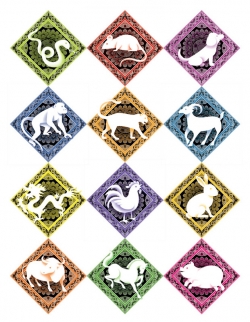![]() A recent study from Jane Out of the Box, an authority on female entrepreneurs, reveals there are five distinct types of women in business. Based on professional market research of more than 2,500 women in business, this study shows that each type of business owner has a unique approach to running a business and therefore each one has a unique combination of needs. This article outlines three of the five types and provides tips for tracking performance metrics and using the information to create future success.
A recent study from Jane Out of the Box, an authority on female entrepreneurs, reveals there are five distinct types of women in business. Based on professional market research of more than 2,500 women in business, this study shows that each type of business owner has a unique approach to running a business and therefore each one has a unique combination of needs. This article outlines three of the five types and provides tips for tracking performance metrics and using the information to create future success.
Jane Dough is an entrepreneur who enjoys running her business and generally, she makes a nice living. She is comfortable and determined in buying and selling, which may be why she’s five times more likely than the average female business owner to hit the million dollar mark. Jane Dough is clear in her priorities and may be intentionally and actively growing an asset-based or legacy business. It is estimated that 18% of women entrepreneurs fall in the category of Jane Dough.
Because Jane Dough-run businesses often produce a large income, Jane Dough business owners are more likely than others to make large investments in their businesses. By tracking key performance metrics, then, Jane Dough can determine whether her investments are paying off – and if they aren’t, she can decide how to shift those investments so they do so.
Given the success of her business, Jane Dough is likely to use advertising systems, such as “pay per click” campaigns on Google or print and radio advertisements. These traditional advertising systems provide relatively simple tracking mechanisms by which Jane Dough can determine how her advertisements are working. For example, “pay per click” advertising allows a business owner to keep track of how many people clicked on her advertisement, based on a certain set of keywords, which she chooses. Jane Dough can figure out how many people visited her web site based on a specific set of keywords – and then she can figure out whether that “pay per click” campaign was worth the investment. Print or radio advertisements in certain markets can include special offers – based on how many people mention those special offers (whether they mention them during a phone call or while filling out an application or customer form of some kind), and Jane Dough will know whether those ads are driving traffic to her business. For Jane Dough, diligence in tracking metrics provides a solid understanding of the company, and a good opportunity for refining goals, educating team members and selecting even more powerful strategies for growth.
Merry Jane. This entrepreneur is usually building a part-time or “flexible time” business that gives her a creative outlet (whether she’s an ad agency consultant or she makes beautiful artwork) which she can manage within specific constraints around her schedule. She may have a day-job, or need to be fully present for family or other pursuits. She realizes she could make more money by working longer hours, but she’s happy with the tradeoff she has made because her business gives her tremendous freedom to work how and when she wants, around her other commitments.
Because Merry Jane needs to remain flexible so she is able to meet her various obligations and responsibilities, she doesn’t have much time to invest in tracking her company’s performance. Nevertheless, tracking performance will assist Merry Jane in establishing where her time is best spent – so it’s a critical investment. A few suggestions to consider on this information-gathering mission:
Studying existing customer relationships provides an excellent venue for Merry Jane to discover what is working. Usually, Merry Jane doesn’t have a large number of customers (and she prefers it that way!). It will be quite simple, then, to tally the results of an Internet survey, an e-mail questionnaire, or even a personal phone call or visit. A Merry Jane business owner can ask existing customers how they found out about her business, what attracted them to her business, and what they believe are the biggest benefits of the business’ products or services. By analyzing this data, Merry Jane can figure out what’s working. For example, if she advertises in three different magazines, but customers mention only two of them, perhaps she might stop advertising in the third. If she sells books, games and toys, and customers list the unique books and games as benefits, maybe she should cut her toy inventory and increase her book and game inventory accordingly.
Go Jane Go is passionate about her work and provides excellent service, so she has plenty of clients – so much so, she’s struggling to keep up with demand. She may be a classic overachiever, taking on volunteer opportunities as well, because she’s eager to make an impact on the world and she often struggles to say no. Because she wants to say yes to so many people, she may even be in denial about how many hours she actually works during the course of a week. As a result, she may be running herself ragged and feeling guilty about neglecting herself and others who are important to her.
Because Go Jane Go is wildly successful in business (she has so many clients she struggles to keep up with demand), it may seem as though she doesn’t need to track performance metrics. However, one of Go Jane Go’s challenges is that she takes her work personally. Her work is a reflection of herself, and as a result, she goes above and beyond to ensure the message her work sends is a positive one. Tracking key performance metrics, then, is essential for Go Jane Go’s personal well-being because it provides her an opportunity to see what is working and what isn’t from a purely business perspective.
Already overcommitted and overwhelmed, Go Jane Go’s most practical choice for handling the measuring of performance metrics may be to hire an individual or a firm to do it. From measuring whether an ad campaign is working to interviewing customers and completing market research, professionals can take care of every aspect of performance measuring and then give Go Jane Go a report she can use to determine her best next steps. Although she sometimes has difficulty handing work to someone else, (for fear that person may not meet her exacting standards), most Go Jane Go business owners don’t have the time to perform in-depth research. She can alleviate the fear of delegating this task by getting references. By hiring someone to tackle this time consuming endeavor, Go Jane Go can focus on the work she loves. Once she gets the report, she can determine whether her energy is in the right place.
Determining which strategies are working is critical in creating a business’ path to success. Measuring performance metrics not only reveals whether resources are being spent as wisely as possible, it also reveals a path for the future.
Interested in learning more about the five Jane types and which Jane you are? Check out www.janeoutofthebox.com
About the Author:
Michele DeKinder-Smith is the founder of Jane out of the Box, an online resource dedicated to the women entrepreneur community. Discover more incredibly useful information for running a small business by taking the FREE Jane Types Assessment at Jane out of the Box. Offering networking and marketing opportunities, key resources and mentorship from successful women in business, Jane Out of the Box is online at www.janeoutofthebox.com



